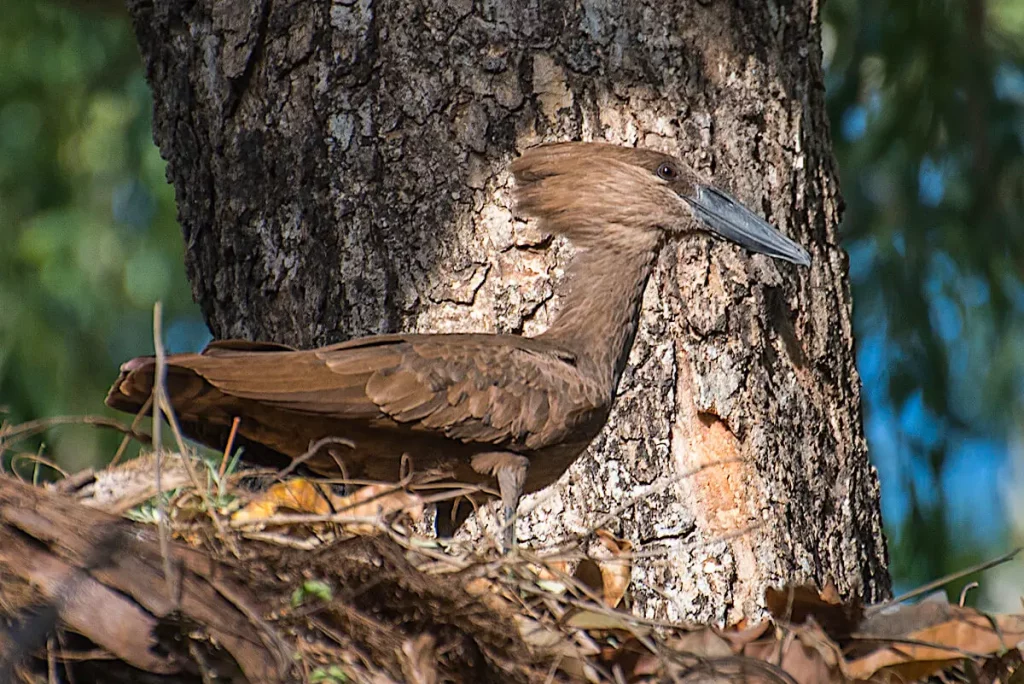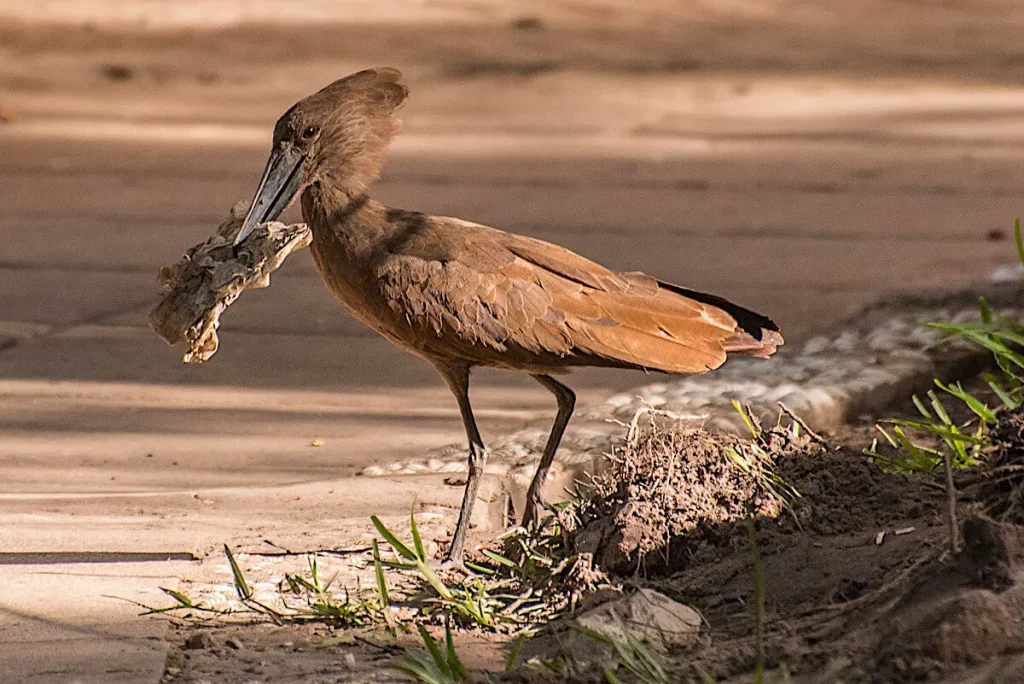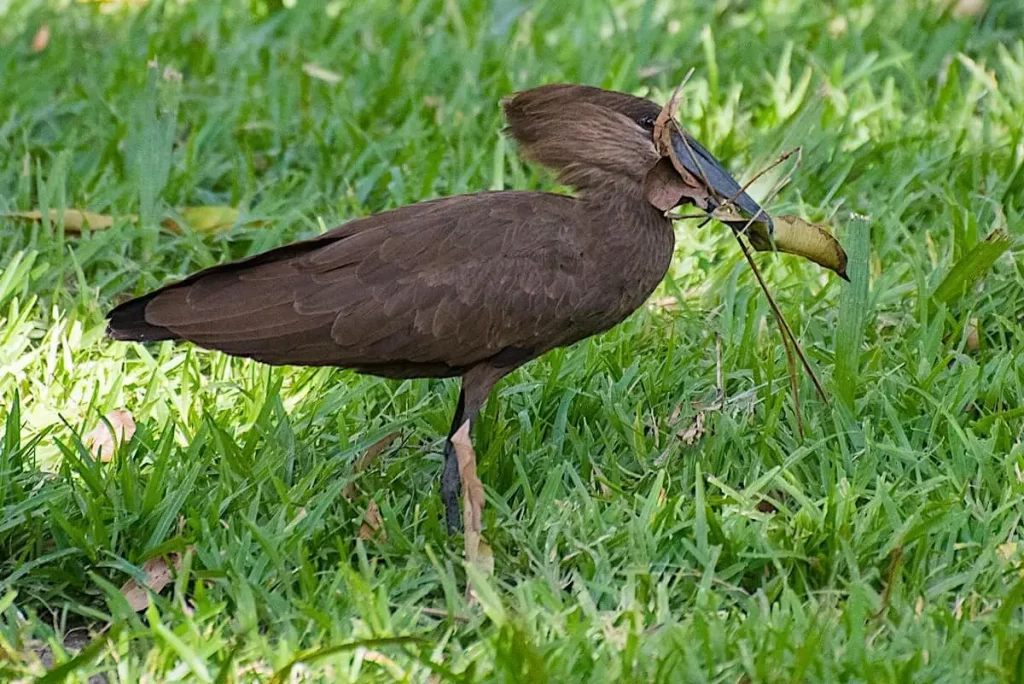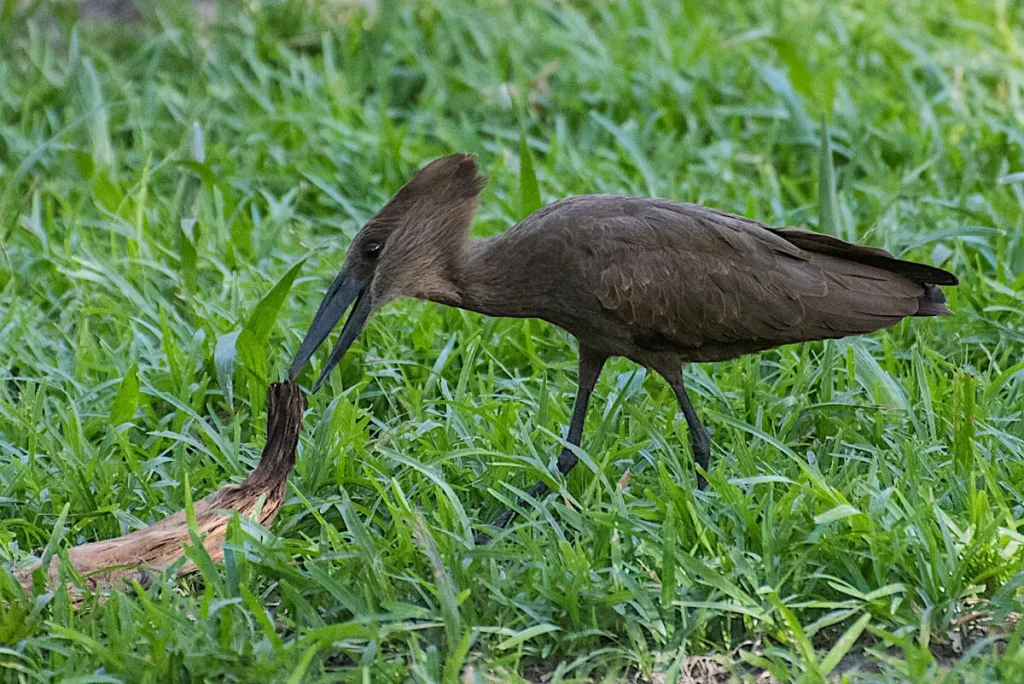The Hamerkop takes its name from the shape of its head, it has a long bill and crest at the back that looks like a hammer. It comes from the Afrikaans word for the hammerhead. It’s easy to see why from the pictures below although I think it should have been named ice pick! You find him at the wetlands just a few minutes from the lodge. They are drawn to shallow water, where they hunt for food. Photos by Rob Garner ©


Where is the Hamerkop found?
The Hamerkop occurs in Africa south of the Sahara. You will also find Mr Hamerkop a short walk from Footsteps. You can walk there unaccompanied or if you would like a guided experience just ask our guide Lamin Bojang. He will be very happy to take you.
What does it look like?
It’s a medium-sized wading bird. It stands around 55 cm and weighs circa 460 g. Brown all over with a slight purple iridescence on its back. It has a long thin beak of approximately 85 mm.
The neck and legs are proportionately shorter than those of similar-looking Pelecaniformes. The bare parts of the legs are black and the legs are feathered only to the upper part of the tibia. The hamerkop has, for unknown reasons, partially webbed feet. The middle toe is comb-like (pectinated) like a heron’s. Its tail is short and its wings are big, wide, and round-tipped; it soars well, although it does so less than the shoebill or storks. When it does so, it stretches its neck forward like a stork or ibis, but when it flaps, it coils its neck back something like a heron. Its gait when walking is jerky and rapid, with its head and neck moving back and forth with each step. It may hold its wings out when running for extra stability. Source Wikipedia
What does it feed on?
The usual method of hunting is to walk in shallow water looking for prey. Prey is located differently depending on circumstances. If the water is clear, it may hunt by sight, but if the water is very muddy, it will probe its open bill into water or mud and shuts it. They feed mainly on fish, frogs and sometimes even small mammals.


Want to know an interesting Factoid?
Hamerkops don’t like dirty food. If they catch a small fish from the mud, they will find clean water to wash it before eating!
How does it sound?
Mostly silent when alone, however, can be quite vocal when in pairs or larger groups. It calls in flight with a sharp Nyip or Kek..
